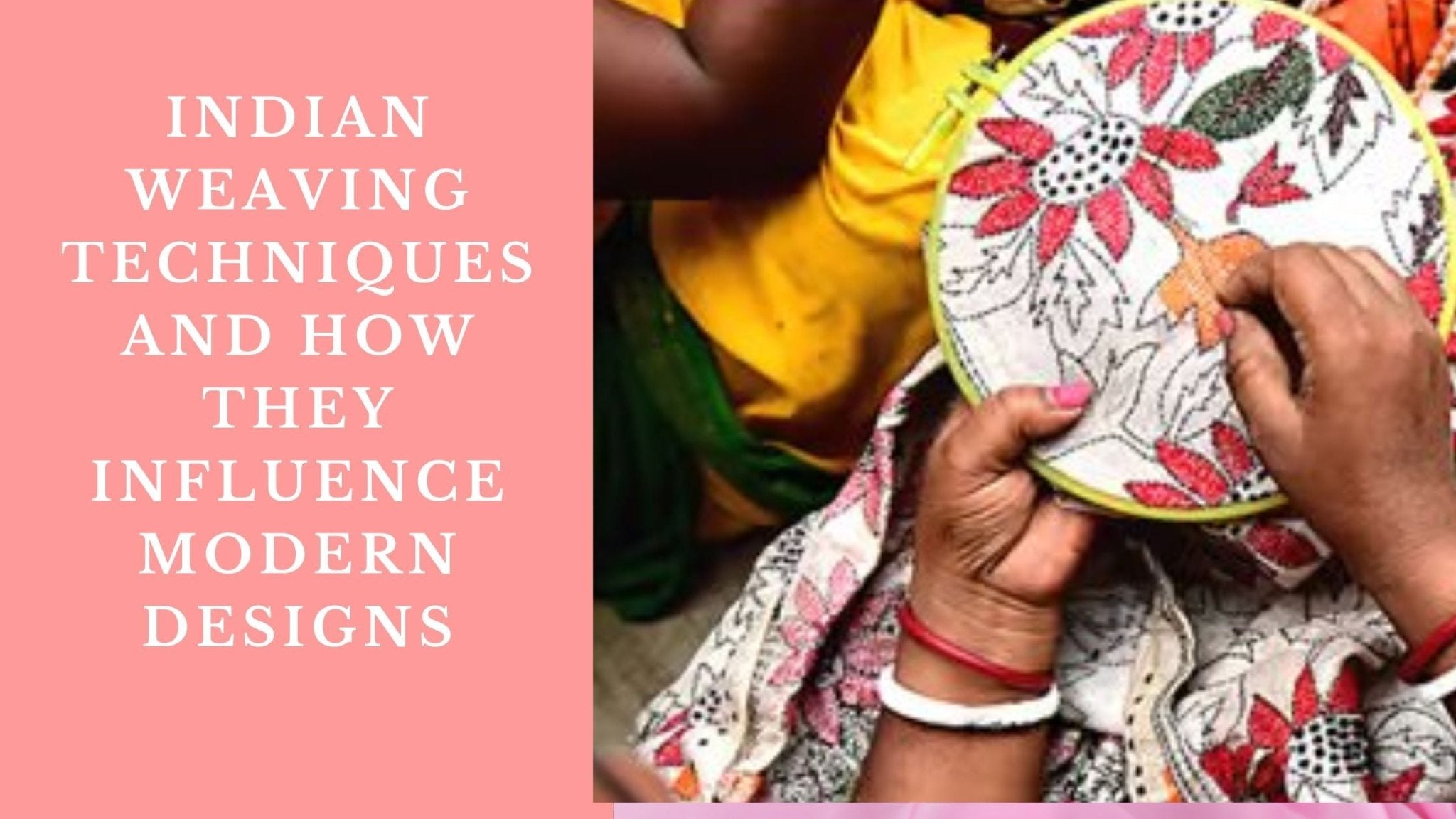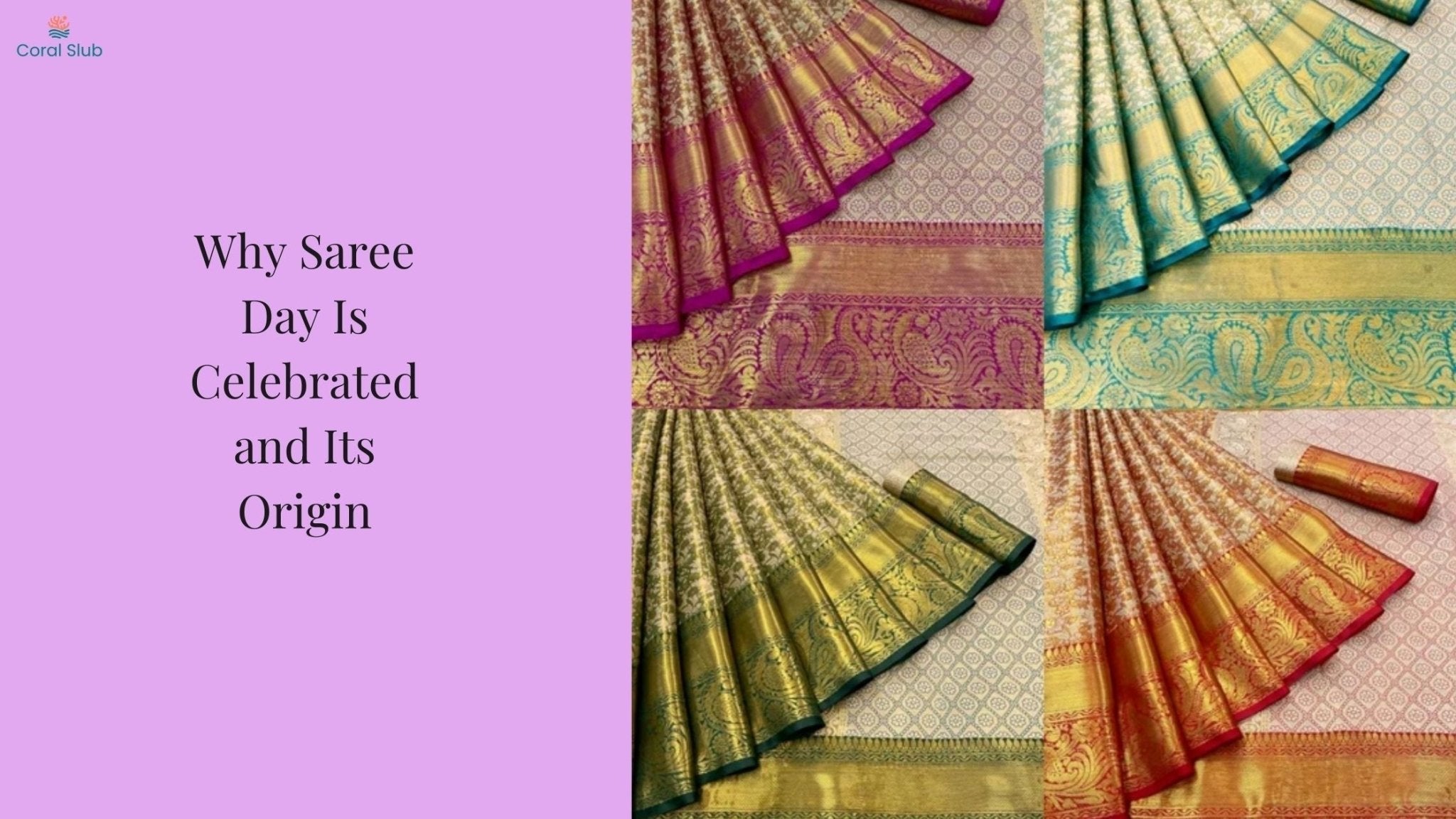Indian weaving techniques are some of the oldest and most intricate textile traditions in the world. Rooted in centuries of craftsmanship, these techniques have shaped not only India's cultural and historical fabric but also its global identity in the world of fashion. Today, they are experiencing a revival, gaining prominence in modern design and global fashion runways. This blog explores the rich history of traditional Indian weaving methods and how they continue to inspire contemporary designs.
The Rich Heritage of Traditional Indian Weaving

India’s textile history is as diverse as its cultures. From the southern silk of Kanjeevaram to the delicate cotton weaves of Bengal, Indian weaving techniques tell stories of the country's history, regional craftsmanship, and cultural evolution. Every region has developed its own weaving traditions, creating an array of textiles, each with a unique style and process. Let’s take a look at some of the iconic weaving techniques:
Ikat:
Found primarily in Gujarat and Orissa, Ikat weaving is known for its tie-dye technique that involves dyeing threads before weaving them into intricate patterns. The technique involves skillfully tying bundles of yarn before they are dyed, creating the characteristic blurred and vibrant patterns. In modern design, Ikat’s uniqueness is often celebrated in both fashion and home décor. A notable example is Coral Slub's Ikat print bedsheets, which beautifully showcase the traditional art of Ikat weaving in a contemporary context. The soft cotton fabric and vibrant, geometric patterns transform a timeless technique into a stylish and functional piece for modern homes.
Kanjivaram Silk:

Originating from Tamil Nadu, Kanjeevaram silks are woven with pure mulberry silk and are famous for their heavy, intricate designs. This technique uses a unique method of weaving the silk in a way that gives it a rich, glossy finish, with bold colors and traditional motifs like temples, elephants, and peacocks.
Banarasi Brocade:

Produced in Varanasi, this technique involves weaving gold or silver threads into the fabric. Traditionally, these brocades are known for their heavy and intricate motifs like paisleys and floral patterns. They are often seen in sarees and bridal wear, symbolizing luxury and opulence.
Jamdhani:

A traditional Bengali weave that uses a complex process where weavers interlace fine threads to create a texture resembling lace or sheer fabric. The Jamdani sarees are known for their complex motifs and intricate designs that can take months to complete.
Chanderi Weaving:

Originating from Madhya Pradesh, Chanderi is a lightweight, fine cotton fabric that is known for its sheer texture and soft sheen. The patterns woven into Chanderi fabrics are often geometric or floral, and they are usually combined with gold or silver threads.
Influence on Modern Designs
The deep cultural roots of traditional Indian weaving techniques have greatly influenced modern fashion, providing contemporary designers with a wealth of inspiration and opportunities for innovation. In recent years, handwoven textiles have made their way from traditional heritage collections to modern fashion lines. Designers are merging the old with the new, infusing classic techniques with current trends and styles.
1. Bridging Heritage with Innovation

Indian weavers have always been known for their attention to detail, and today’s designers are capitalizing on this. For example, contemporary designers like Sabyasachi Mukherjee and Anita Dongre are known for blending handwoven fabrics with modern silhouettes, creating collections that celebrate India’s textile heritage while catering to global fashion tastes. These designs preserve the traditional techniques but with a twist, incorporating them into contemporary pieces like maxi dresses, tunic tops, and even menswear. By modernizing traditional sarees or using Ikat in contemporary evening wear, these designers are making Indian textiles relevant to younger, fashion-conscious consumers.
2. Sustainable Fashion and Handwoven Textiles

With the rise of sustainable fashion, traditional handwoven textiles have found a new, powerful niche in the global fashion scene. Handwoven fabrics like Khadi, Ikat, and Jamdani have found favor among eco-conscious consumers due to their low environmental impact and the ethical nature of handcrafting. Unlike mass-produced, synthetic fabrics, these textiles are made with natural fibers and dyes, and the production process often supports local artisans. In this sense, the revival of traditional Indian weaving techniques ties into the global shift towards sustainability. Modern fashion brands and global designers are increasingly turning to these traditional fabrics to create eco-friendly luxury collections, adding a layer of ethical consumption to the contemporary fashion industry.
3. Unique Motifs and Patterns

The distinct motifs and patterns found in Indian weaving have a timeless quality that resonates with contemporary aesthetics. For instance, the geometric patterns found in Chanderi and the traditional paisleys of Banarasi silk are being revived in modern designs through innovative applications. These traditional motifs are being reimagined on modern apparel like tunics, dresses, and even accessories like scarves and handbags. Designers are also experimenting with these motifs in unusual color palettes, making them more accessible to international markets and modern fashion trends.
4. Mixing Traditional Weaving with Modern Textiles

Designers are blending handwoven techniques with modern textiles like Tencel, Lycra, and even denim to create new hybrid fabrics. For example, the fine textures of Kanjivaram or Jamdani are being combined with contemporary fabrics, creating pieces that blend old-world charm with a fresh, modern feel. This merging of fibers not only makes the fabrics more versatile but also helps them reach wider audiences, creating a crossover between traditional handloom designs and international fashion trends.
5. Textile Collaborations and International Recognition

Global recognition of traditional Indian textiles has also sparked a wave of collaborations. High-profile designers like Giorgio Armani, Stella McCartney, and Jean-Paul Gaultier have worked with Indian artisans to create exclusive collections that feature traditional weaves and techniques. These international collaborations elevate Indian handloom weaving to a global stage, promoting the techniques on fashion runways across the world.
6. Digital Platforms and Market Access

The rise of digital platforms and e-commerce has given traditional Indian weavers a direct link to the global market. Social media has also played a huge role in showcasing handwoven textiles, allowing weavers and designers to tell their stories and connect with international consumers. Today, anyone around the world can purchase a handwoven saree or dress made using traditional techniques, empowering local artisans and bringing their creations to a global audience.
Conclusion
Traditional Indian weaving techniques, though steeped in history, are alive and well in the modern world of fashion. These age-old practices continue to inspire contemporary designs, offering a rich blend of cultural heritage, artistry, and craftsmanship. The influence of handwoven textiles like Ikat, Khadi, and Kanjivaram in modern fashion is a testament to the enduring beauty and relevance of India’s textile traditions.
With the growing demand for sustainable, artisanal, and culturally rich fashion, it’s clear that these timeless techniques will continue to influence global fashion trends for years to come. By merging heritage with innovation, modern designers are breathing new life into India’s textile craftsmanship, proving that traditional weaving techniques have a significant role to play in the future of fashion.









